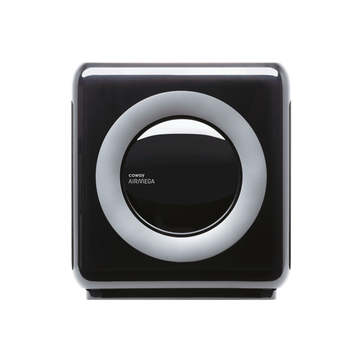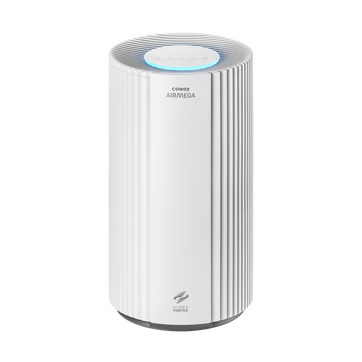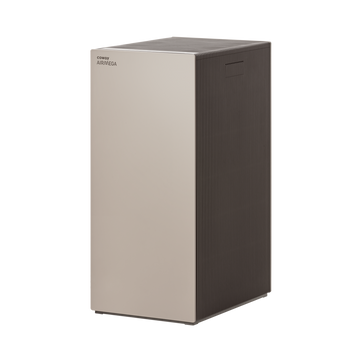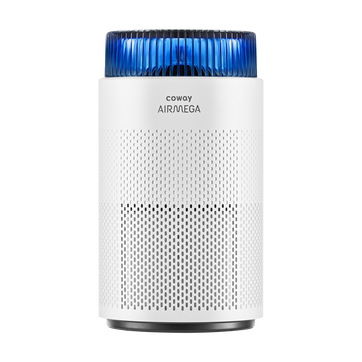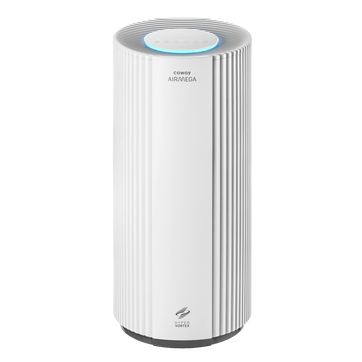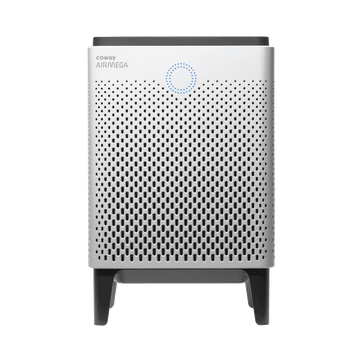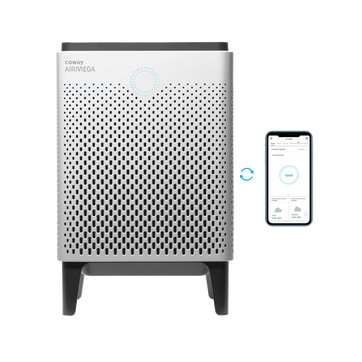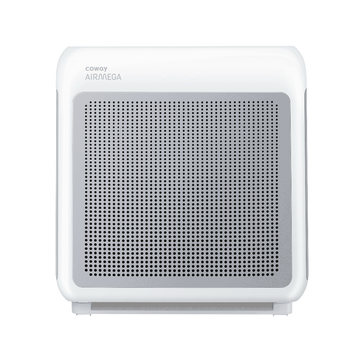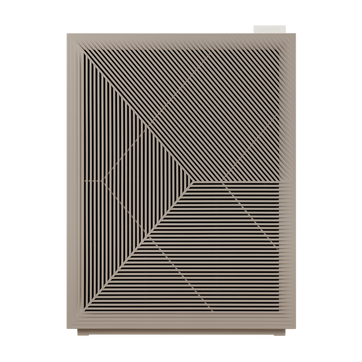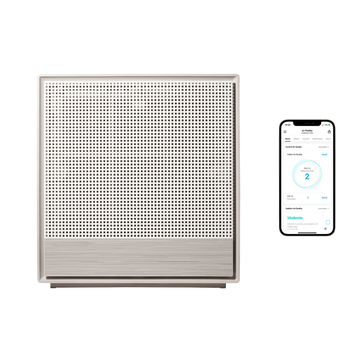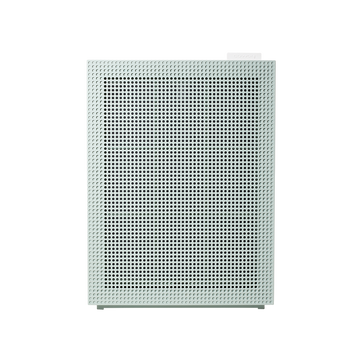
What is a Particulate Matter Sensor?
Air pollution affects how we live, breathe, and feel every day. Among many air pollutants, particulate matter (PM) deserves special attention. These microscopic particles, ranging from dust and smoke to soot and organic aerosols, can penetrate deeply into the respiratory system and may exacerbate conditions such as asthma or heart disease. The first step to managing exposure is to measure it. That is where particulate matter sensors come in. They translate invisible particles in the air into precise, real-time data you can act on.
For a refresher on PM fundamentals, refer to our comprehensive guide to particulate matter. This article focuses on the sensors themselves, their operation, their applications, and key considerations when selecting one for indoor air quality.
What Are Particulate Matter Sensors?
Particulate matter sensors are compact instruments that detect particles in the air and estimate their concentration by size range. Most consumer and many professional sensors rely on light scattering. A controlled light source shines through an air channel. When particles pass through the beam, they scatter light. A photodetector captures that scattered light, and the sensor's electronics estimate particle size and particle concentration from the signal.
Other approaches exist, including beta attenuation and gravimetric mass determination. Those are often used as reference instruments by agencies and labs. For homes, schools, offices, and most routine monitoring applications, optical methods provide accurate, real-time insights with fast response times and stable performance.
Key Terms at a Glance
-
PM10: Particles with an aerodynamic diameter of 10 micrometers or smaller, such as coarse dust.
-
PM2.5: Fine particles with a diameter of 2.5 micrometers or smaller, often from combustion or smoke.
-
PM1: Wonderful particles at 1 micrometer or smaller. These can reach deep into the lungs.
-
Number concentration: How many particles are counted in a given volume of air?
-
Mass concentration: An estimate of particle mass in micrograms per cubic meter (µg/m³).
How Optical PM Sensors Measure the Air
Most modern PM sensors are optical. They combine a few core components with an intelligent algorithm to produce dependable readings.
1) Light Source and Detector
A laser or IR LED emits a narrow laser beam or infrared beam across a tiny chamber. As particles in the air cross the path, they scatter light in all directions. A photodetector at a fixed scattering angle captures the signal. The intensity and shape of the signal correlate with particle diameter and count.
2) Particle Counting and Sizing
Raw pulses are processed into particle counting across size bins. With proper calibration, the instrument estimates particle size distributions and converts counts to mass concentration using standard density assumptions and algorithms. Many sensors also account for environmental conditions, such as temperature and humidity, to maintain accuracy.
3) From Counts to Concentration
Because mass scales roughly with the third power of diameter, tiny changes in size have significant effects on mass concentration. Good firmware utilizes classification logic and algorithms to minimize errors, particularly when the air mixture transitions from, for example, dust to smoke.
How Coway PM Sensors Work
Coway air purifiers utilize an optical sensing method specifically optimized for capturing PM2.5 and PM10 particles. The sensor features an IR LED and a precisely aligned photodetector. As airborne particles flow through the chamber, they reflect the IR light into the detector. By analyzing the intensity pattern of the reflected signal, the sensor determines the concentration of particles in real-time. This data feeds the purifier's logic, allowing it to automatically adjust fan speed, increase cleaning during pollution spikes, and return to quiet operation once the air is clean.
Types of PM Sensors by Size Range
Different-sized fractions matter for various reasons. Many instruments report multiple ranges at once.
PM1 Sensors
Measure wonderful particles at 1 micrometer and below. These can reach deep into the lungs and may carry combustion byproducts. Monitoring PM1 can be helpful in areas affected by smoke.
PM2.5 Sensors
Track fine particles at 2.5 micrometers and below. PM2.5 is commonly used for health guidance because it is associated with adverse respiratory and cardiovascular outcomes.
PM10 Sensors
Measure coarse particles at 10 micrometers and below, often from larger particles like dust, pollen fragments, and road wear. PM10 can irritate the eyes, nose, and throat and aggravate asthma.
A single modern PM sensor can report PM1, PM2.5, and PM10 simultaneously, providing a more comprehensive picture of air quality.
What PM Sensors Are Used For
Air Quality Monitoring Networks
Municipal and regional monitoring sites use reference instruments and optical sensors to gather continuous air quality data. The real-time view enables authorities to manage events such as wildfires or dust storms and verify that clean-air policies are effective.
Industrial and Commercial Sites
Facilities monitor particle concentration to protect workers, ensure process quality, and demonstrate compliance with regulations. Construction projects may track dust particles at the perimeter to reduce neighborhood impact.
Indoor Environments
Homes, schools, restaurants, and clinics utilize PM sensors to monitor and manage indoor air quality. Integrated purifiers and wall monitors help identify sources, improve ventilation, and verify the effectiveness of filtration.
Smart Home Devices and Wearables
PM sensing now appears in smart home products, air purifiers, and portable devices. While low-cost sensors cannot match laboratory instruments, they deliver practical, real-time insights for daily decisions, such as when to ventilate or when to run purification.
Air Conditioners and HVAC
Some air conditioners and building systems incorporate embedded PM sensing to dynamically adjust filtration or outside air intake, thereby improving comfort while saving energy.
Strengths and Limits of Optical PM Sensors
Strengths
-
Fast response with second-by-second trends
-
Compact form factor and low power use
-
Good repeatability for trend monitoring
-
Integration into devices for automatic control
Limits
-
Measurement can vary by flow rates, humidity, and particle type
-
Estimates of mass concentration depend on density assumptions
-
Accumulated dust in the sensor path may affect readings without periodic cleaning
For regulatory decisions and scientific studies, gravimetric mass determination and advanced chemistry methods remain essential. For everyday health and comfort, optical PM sensing is an excellent guide.
Sensor Technology: What to Look For
When comparing particulate matter sensors or devices that contain them, consider the following attributes.
Accuracy, Precision, and Stability
Look for documented comparisons against a reference instrument over time. A good sensor will report stable trends and maintain high precision across typical environmental conditions.
Response Time
A faster response time makes it easier to catch short events, such as cooking or cleaning, and allows devices to adjust purification promptly.
Flow Management
Quality sensors control or characterize internal airflow. Stable flow rates help ensure consistent readings.
Maintenance and Cleanability
Sensors benefit from occasional cleaning of the inlet and optical chamber to remove settled dust. Easy access helps preserve stable performance.
Data and Connectivity
Consider whether you want app visibility, historical data, and alerts. Devices that show PM1, PM2.5, and PM10 help you understand both particle size and sources.
Cost and Use Case
Low-cost PM sensors are excellent for trend tracking and intelligent control. For compliance reporting or research, use certified instruments and protocols.
Choosing the Right Sensor for Your Space
Start with your goal. To enhance comfort at home, consider a purifier equipped with an integrated particle sensor and automatic fan control. For classrooms or offices, a wall-mounted monitor can guide ventilation and filter schedules. For workshops, consider devices that emphasize PM10 and have rugged housings. Align unit selection with room size, sources, and your plan for responding to the readings.
How PM Data Drives Action Indoors
PM sensors are most potent when they trigger helpful behavior.
-
Ventilation: Open windows when outdoor air is cleaner than indoor air. Brief cross-breezes can quickly reduce PM concentration.
-
Source control: Use lids and lower the heat when cooking. Select low-emission materials and keep surfaces clean and dust-free.
-
Filtration: Run a purifier sized for the space. Look for strong CADR and multi-stage filtration.
-
Scheduling: Use readings to create a routine. For example, higher fan speed during meal prep, and quiet mode overnight.
Inside Coway Purifiers: Sensing and Filtration Working Together
Coway designs purifiers so sensing and filtration reinforce each other.
Real-Time Sensing
The integrated sensor probe continuously evaluates particles in your air. When pm concentration rises, the unit automatically increases fan speed to capture more air through the filters.
Three-Stage Filtration
-
The pre-filter captures hair and coarse dust to protect the downstream media.
-
True HEPA filtration targets fine particles, such as PM2.5 and PM1.
-
Activated carbon reduces odors and certain gases for a fresher environment.
This combination removes fine particles rapidly while maintaining comfortable noise levels for daily life.
Tested Performance
Coway systems undergo rigorous performance tests for airflow, efficiency, and durability. The goal is simple. Deliver measurable results you can see on the display and feel in your breathing.
Sensor Science: Why Light Scattering Works
Light interacts with particles according to their size, shape, and refractive index. In optical PM sensing, the detector interprets intensity patterns of scattered light created as particles traverse the beam. With calibration, the electronics infer particle counting by size bin and convert that to mass concentration.
Because different sources exhibit varying optical properties, the best instruments combine robust hardware with adaptive algorithms. This maintains accuracy across standard mixtures such as cooking aerosols, road dust, and wildfire smoke.
Exceptional Cases You May Hear About
-
Diesel particulate filter monitor (DPF): Vehicles utilize sensors to verify that the DPF is functioning correctly and detect any potential failures. Those sensors and electrode structure designs are specialized for exhaust systems and not used indoors.
-
Conductive soot trails: Certain industrial sensors detect electrical changes caused by soot particles. This approach differs from optical sensing, which is designed explicitly to facilitate specific processes.
For homes and offices, optical PM sensing remains the preferred option due to size, cost, and practical performance.
Frequently Asked Questions
Do I need to measure PM1, PM2.5, and PM10, or is PM2.5 sufficient?
If you can only choose one, PM2.5 is a good proxy for health guidance. PM1 adds detail about wonderful particles from combustion. PM10 helps identify coarse dust and pollen fragments. Many devices report all three.
How often should I clean the sensor area?
Check the manual. In most indoor environments, wiping the inlet and using compressed air a few times a year is sufficient to maintain cleanliness. If you see drift or abrupt changes without a known source, maintenance can help.
Are low-cost sensors reliable?
They are handy for tracking trends and controlling purifiers in real-time. For regulatory reporting, use certified methods and reference instruments.
Why do my readings differ from the city's monitoring site?
Outdoor stat employs various technologies and locations and may report averages over longer intervals. Your indoor readings reflect the immediate space and sources around you.
The Coway Perspective
At Coway, sensor quality is an integral part of a comprehensive air strategy. Our purifiers use refined optical sensing to guide automatic operation. Models like Airmega 250 and Airmega 400 pair intelligent sensing with multi-stage filtration to capture fine particles efficiently in rooms of various sizes. In third-party testing, these systems have demonstrated high removal efficiency for microscopic particles, which helps keep indoor environments cleaner and more comfortable for daily living. Filter life indicators and simple access make upkeep easy, so you spend less time maintaining and more time breathing easy.
Clean Air Starts With Clear Information
Particulate matter sensors turn invisible concerns into visible numbers. They help you recognize patterns, reduce sources, and use filtration wisely. Whether you are managing a classroom, improving a home office, or maintaining a whole household, a capable PM sensor paired with the right purifier can enhance comfort and confidence—on Developers' Day.
If you are ready to upgrade your indoor air quality tools, explore Coway purifiers with integrated sensing. Precise data, quiet performance, and thoughtful design work together to make every breath feel better.
CDC - Particle Pollution
National Library of Medicine - A Review of Low-Cost Particulate Matter Sensors from the Developers' Perspectives
Wiley Online - Machine Learning-Enabled Smart Sensor Systems
EPA - Particulate Matter (PM) Basics
Perfect Pollucon Services - It's all about Particulate Matter Measurement (PM10, PM2.5)
Clarity - What is air quality monitoring, and why is it important?
EPA - Setting and Reviewing Standards to Control Particulate Matter (PM) Pollution
EPA–Low-Cost Air Pollution Monitors and Indoor Air Quality
American Chemical Society - AirPen: A Wearable Monitor for Characterizing Exposures to Particulate Matter and Volatile Organic Compounds
Journal of Environmental Management - Sensors and systems for air quality assessment, monitoring, and management: A review
Disclaimers
1Coway air purifiers have been proven to trap dust, pollen, dander, viruses and bacteria in the air based on KCL (Korea Conformity Laboratories) testing.They have been tested in a 30㎥ size chamber according to the Korea Air Cleaning Association standard (SPS-KACA 002-132:2022 Modified) to measure the 0.01㎛ size of particle removal rate. It was tested on maximum airflow speed in normal room temperature and humidity conditions. The performance may vary in the actual living environment of customers.
→ Tested with Airmega Aim, 50, 100, 150, 160, Tower AP-1216L, Mighty AP-1512HH, MightyS AP-1512HHS, 200M, Icon, IconS, 230, 240, 250, 250 Art, 250S, 300, 300S, 350, 400, 400S, 450, ProX
299.97% of viruses, bacteria, fungi and pollen were verified to be removed from the air for Coway air purifiers which have Green True HEPA™ filter applied based on the Japan Food Research Laboratories(JFRL) testing according to JEM 1467 standard.
→ Tested with Coway Airmega Mighty AP-1512HH, MightyS AP-1512HHS, 250, 250 Art, 250S, 300, 300S, 400, 400S
→ All tested by JFRL and received above result within below time.
4The concentration of ammonia, acetaldehyde and acetic acid were proven to be removed within 30 minutes by FCG Research Institute, Inc. Human Life Science Lab. It is not a demonstration result in the actual use space. Not all odors and gases may be supported. → Tested with Coway Airmega 150, 160, Mighty AP-1512HH, MightyS AP-1512HHS, 400, 400S
5The coverage area of the air purifier is based on an area where the air cleaner can make two air changes per hour (ACPH). An air change per hour translates to how many times an air purifier can clean an area, assuming the height of a ceiling to be 8 ft, in one hour. Therefore ** means two air changes per hour means that the cleaner can clean the area once every 30 minutes and * means air changes per hour means that the air purifier can clean the area once every 60 minutes.
10Terms and conditions apply. Discounts, including promotions, coupons, bundle discount and subscription discount, cannot be stacked on top of other coupons. During promotional periods, discount codes will not be able to be applied to orders. Promo codes may apply to products only—filters, accessories, and new products within 3 months of the release date are not included.
11Based on Coway R&D internal laboratory testing, activated carbon filtration was shown to remove up to 95% of ammonia odors within 40 minutes, and up to 99% of fecal odors within 20 minutes. Actual performance may vary depending on usage conditions.

